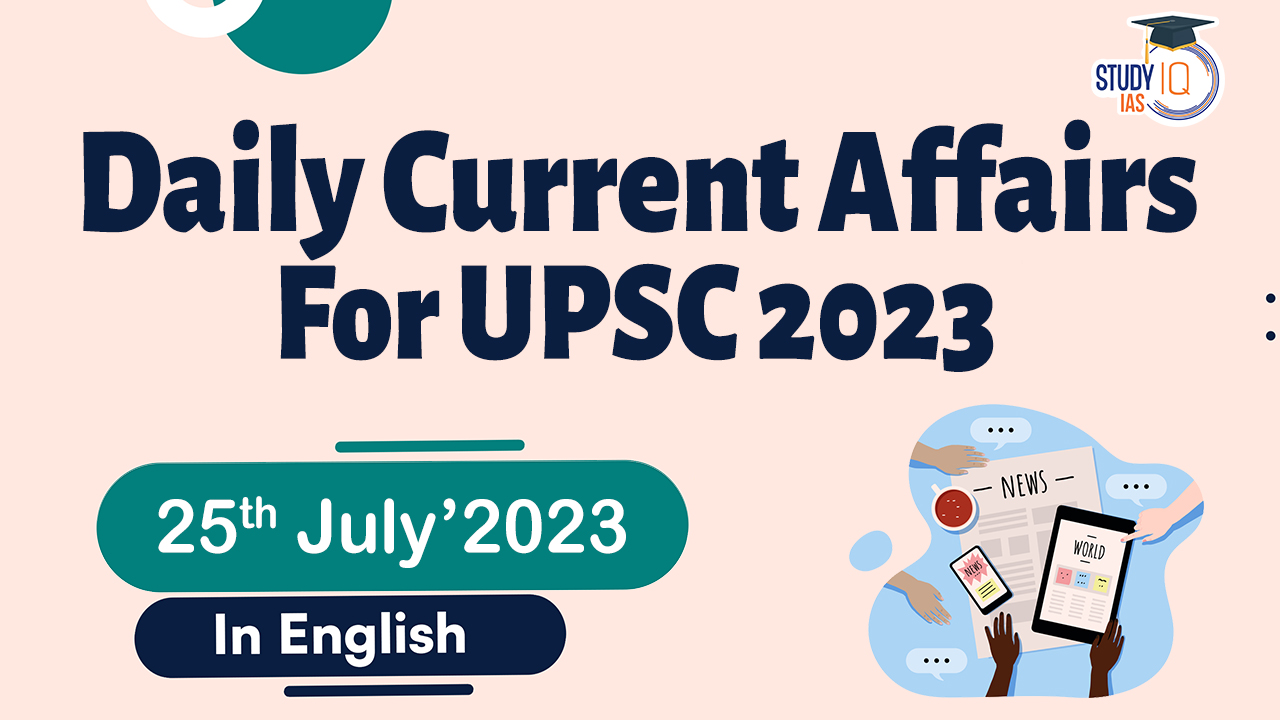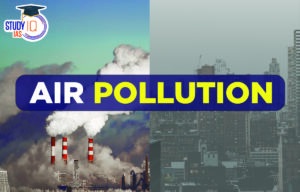Daily Current Affairs for UPSC 2023
Q) Recently seen in news, the Global Report on the Food Crises, 2023 was published by which one of the following organization?
- World Food Programme
- Food and Agriculture Organization
- Food Security Information Network
- International Fund for Agricultural Development
Daily Current Affairs for UPSC – 24 July April 2023
Explanation:
- Option (3) is correct: The Global Report on the Food Crises (GRFC) 2023 released recently estimated that between 691 million and 783 million people in the world suffered from hunger in 2022. Published by the Food Security Information Network (FSIN) in support of the Global Network against Food Crises (GNAFC), the GRFC is the reference document on global, regional and country-level acute food insecurity in 2022. It provides analysis of the key drivers of acute food insecurity in food-crisis contexts and presents an overview of food-crisis trends since 2016. The GRFC 2023 is the result of a collaborative effort among 16 partners to achieve a joint consensus-based assessment of acute food insecurity in countries with food crises. The report aims to inform humanitarian and development action by providing the global and national food security community with independent and consensus-based evidence and analysis. As per the Report, hunger is no longer increasing at a global level, but it remains far above pre-COVID pandemic levels. The world is still off track towards achieving Sustainable Development Goal 2, which aims for Zero Hunger.
Q) Consider the following statements about District Mineral Foundations (DMFs):
- DMFs are trusts established under the EnvironmentProtection Act of 1986.
- About 10 percent of the royalties on mining leases is provided by the miners to the DMFs.
- A DMF is responsible for implementing the Pradhan Mantri Khanij Kshetra Kalyan Yojana in mining affected areas.
How many of the statements given above are correct?
- Only one
- Only two
- All three
- None
Explanation:
- Statement 1 is incorrect: District Mineral Foundations (DMFs) are non-profit trusts that are formed under the Mines and Minerals (Development and Regulation) (MMDR) Amendment Act 2015. They are established by state governments in every district affected by mining-related operations.
- Statement 2 is correct: In case of all mining leases executed before 12th January 2015 (the date of coming into force of the Amendment Act) miners will have to contribute an amount equal to 30% of the royalty payable by them to the DMFs. Where mining leases are granted after 12.01.2015, the rate of contribution would be 10% of the royalty payable. Beneficiaries under DMF scheme are people who have lost their land rights (including legal, occupational, usufruct and traditional rights) and livelihood (including forest-based livelihood) due to mining.
- Statement 3 is correct: DMFs are responsible to work in the interest and benefits of persons and areas affected by mining-related operations in a manner as may be prescribed by the State Government. A DMF is responsible for implementing the Pradhan Mantri Khanij Kshetra Kalyan Yojana (PMKKKY) and other schemes in areas where mining is carried out. The Ministry of Mines launched the PMKKKY in 2015 for the welfare of areas and people affected by mining-related operations, using the funds generated by DMFs.
Q) With reference to National Mission on Monuments and Antiquities (NMMA), consider the following statements:
- NMMA assists in compiling a database of all artifacts to facilitate better management of these cultural resources.
- As per the Parliamentary Standing Committee, the NMMA has documented more than half of the antiquities in India.
- NMMA is set up under the Archaeological Survey of India, Ministry of Culture.
How many of the statements given above are correct?
- Only one
- Only two
- All three
- None
Explanation:
- Statement 1 and 3 are correct: National Mission on Monuments and Antiquities (NMMA) was launched in 2007 to document India’s monuments and antiquities to help in the creation of a database of all antiquities that can be referred to readily in case of fraudulent dealings or theft. It was initially set up for a period of five years from 2007. It was extended for a further five years till 2017 and later merged with the Archaeological Survey of India. NMMA is under Ministry of Culture. NMMA helps in documentation and creation of suitable database on built heritage and sites for information and dissemination to planners, researchers etc. and for better management of such cultural resources.
- Statement 2 is incorrect: The Parliamentary Standing Committee on Transport, Tourism and Culture has noted that the National Mission on Monuments and Antiquities has only been able to document 16.8 lakh antiquities. The Parliamentary Standing Committee noted in its report NMMA has only been able to document 16.8 lakh antiquities out of a total of 58 lakh which is just about 30%.
Q) Consider the following statements about Cantonments:
- They are governed by the Cantonments Act of 2006, which provides for the municipal administration of these areas.
- A Cantonment Board is made up entirely of elected officials who serve terms of five years.
- The executive officer of the cantonment board is appointed by the Chief of Army Staff in India.
How many of the statements given above are correct?
- Only one
- Only two
- All three
- None
Explanation:
- Statement 1 is correct: Cantonments in India are permanent military stations where a group of military personnel are stationed for administrative purposes. These cantonments are governed by the Cantonments Act, 2006 which provides for municipal administration and control of these areas. A cantonment board is established for municipal administration for civilian population in the cantonment area. It is set up under the provisions of the Cantonments Act of 2006-a legislation enacted by the Central government. It works under the administrative control of the defense ministry of the Central government.
- Statement 2 is incorrect: Cantonment Board consists of partly elected and partly nominated members. The elected members hold office for a term of five years while the nominated members (i.e., ex-officio members) continue so long as they hold the office in that station.
- Statement 3 is incorrect: The military officer commanding the station is the ex-officio president of the board and presides over its meetings. The vice president of the board is elected by the elected members from amongst themselves for a term of five years. The executive officer of the cantonment board is appointed by the President of India. He implements all the resolutions and decisions of the board and its committees. He belongs to the central cadre established for the purpose.
Q) With reference to ‘Tele MANAS’, consider the following statements:
- It aims to provide free tele-mental health services all over the country.
- Indian Institute of Technology Bombay is the nodal centre of ‘Tele-MANAS’ initiative.
Which of the statements given above is/are correct?
- 1 only
- 2 only
- Both 1 and 2
- Neither 1 nor 2
Explanation:
- Statement 1 is correct: Tele-MANAS was launched in 2022 to provide free tele-mental health services all over the country round the clock, particularly catering to people in remote or under-served areas. Government of India announced National Tele Mental Health Programme (NTMHP) in the Union Budget 2022-23. Tele-MANAS was launched in 2022 aims to provide free tele-mental health services all over the country round the clock, particularly catering to people in remote or under-served areas.
- Statement 2 is incorrect: The programme includes a network of 23 tele-mental health centres of excellence, with National Institute of Mental Health and Neuro Sciences (NIMHANS) being the nodal centre and International Institute of Information Technology-Bangalore (IIITB) providing technology support. Indian Institute of Technology (IIT) Bengaluru and National Health Systems Resource Centre (NHRSC) will provide the technical support. A toll-free, 24/7 helpline number (14416) has been set up in India allowing callers to select the language of choice for availing services.


 Air Pollution in India, Causes, Effects,...
Air Pollution in India, Causes, Effects,...
 Daily Quiz 03 April 2025
Daily Quiz 03 April 2025
 List of National Symbols of India with N...
List of National Symbols of India with N...





















